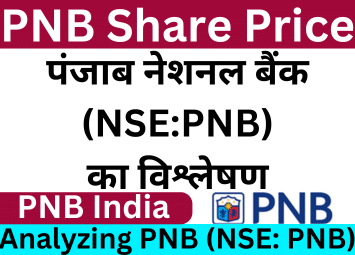NSE Introduction
Punjab National Bank (NSE: PNB) holds a significant position in India’s banking sector, reflecting its listing on the National Stock Exchange (NSE). As investors navigate the complexities of the stock market, understanding the fundamentals of PNB becomes imperative. In this article, we delve into the core aspects of Punjab National Bank from a fundamental perspective.
Historical Performance:
PNB, founded in 1894, has a rich legacy in Indian banking. Over the years, it has weathered various economic cycles and regulatory changes. However, like many banks, PNB has faced challenges, including non-performing assets (NPAs) and governance issues, which impacted its financial performance in recent years.
Financial Health:
Analyzing PNB’s financial statements provides insight into its health. Key metrics such as net interest margin (NIM), return on assets (ROA), and capital adequacy ratio (CAR) offer a glimpse into its profitability, asset quality, and financial stability. Investors scrutinize these metrics to gauge the bank’s ability to generate profits and withstand risks.
Asset Quality and NPAs:
Asset quality is paramount for banks, and PNB’s NPA levels have been a focal point for investors. The bank’s efforts to reduce NPAs and improve asset quality through provisioning and recovery mechanisms are crucial indicators of its resilience. Monitoring trends in NPAs and provisions helps investors assess the bank’s risk management practices.
Business Strategy:
PNB’s business strategy, including its focus on retail banking, corporate lending, and digital transformation, shapes its growth trajectory. Expansion plans, product innovation, and customer-centric initiatives play a pivotal role in driving revenue growth and market share. Understanding PNB’s strategic direction provides insights into its future prospects.
Regulatory Environment:
As a regulated entity, PNB operates within the framework set by the Reserve Bank of India (RBI) and other regulatory bodies. Compliance with regulations, adherence to prudential norms, and governance standards are critical for maintaining trust and credibility. Investors monitor regulatory developments and governance practices to assess the bank’s risk profile.
Market Position and Competition:
PNB’s position relative to its peers and its competitive strengths are essential considerations for investors. Market share, branch network, technological capabilities, and brand reputation contribute to its competitive advantage. Analyzing PNB’s position vis-à-vis competitors helps investors evaluate its ability to capture market opportunities.
Macro-Economic Factors:
External factors such as economic growth, interest rates, inflation, and regulatory changes influence PNB’s performance. A robust macro-economic environment generally bodes well for the banking sector, while economic downturns or policy shifts can pose challenges. Monitoring macro-economic indicators provides context for evaluating PNB’s performance.
Investment Considerations:
Investing in PNB requires a balanced assessment of risks and rewards. While the bank’s historical performance, financial health, and business strategy offer insights, investors must also consider market dynamics, regulatory environment, and macro-economic factors. Diversification, risk management, and long-term perspective are key principles for prudent investing.
Conclusion:
Punjab National Bank (NSE: PNB) holds a prominent position in India’s banking landscape, reflecting its listing on the National Stock Exchange. Analyzing PNB from a fundamental perspective involves assessing its historical performance, financial health, business strategy, regulatory environment, market position, and macro-economic factors. By understanding these aspects, investors can make informed decisions about investing in PNB, balancing risks and rewards in pursuit of their financial goals.
